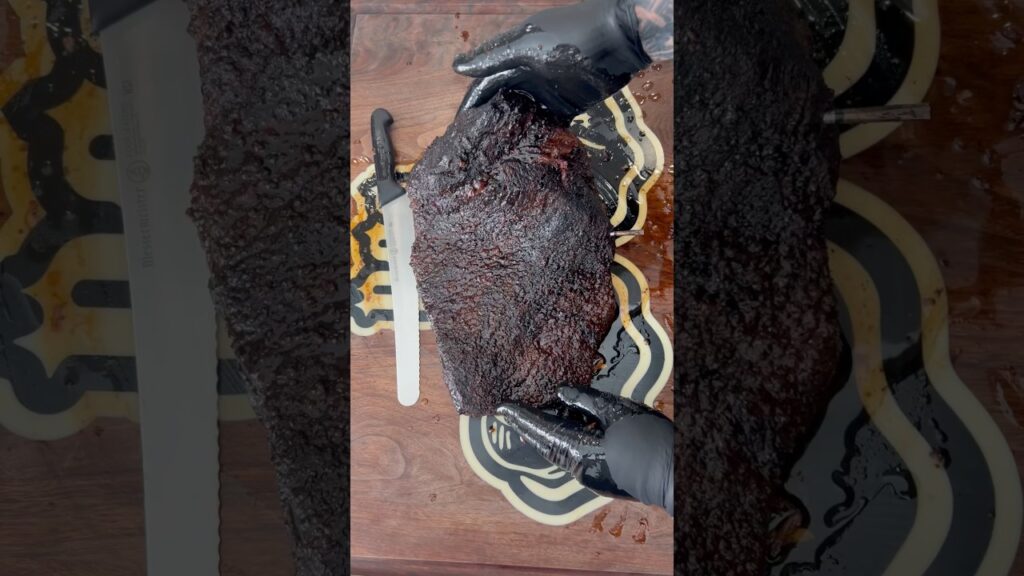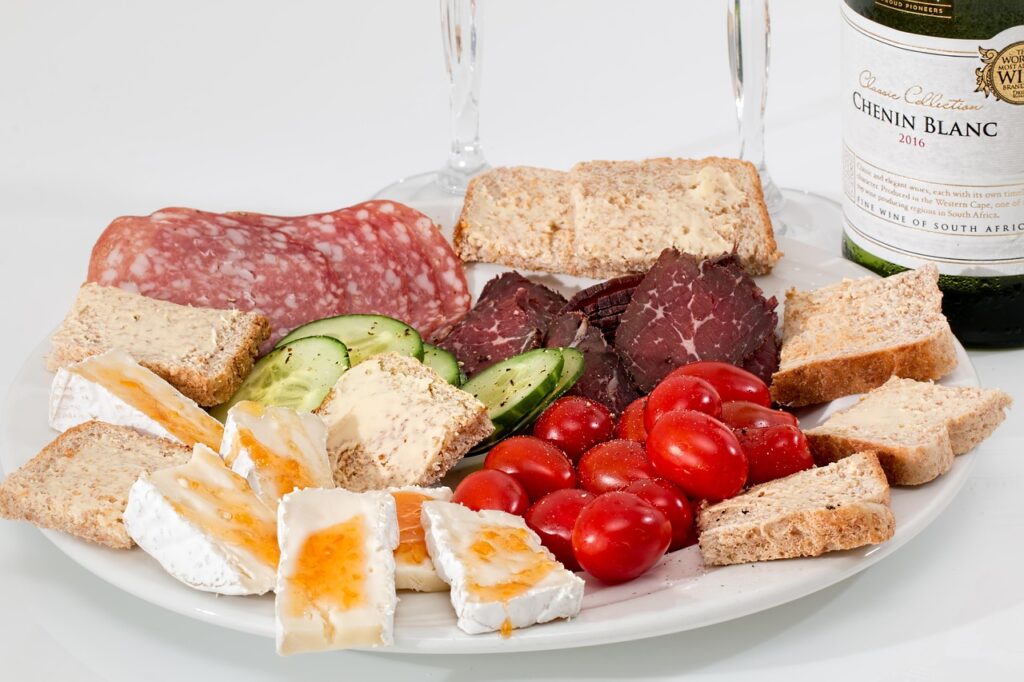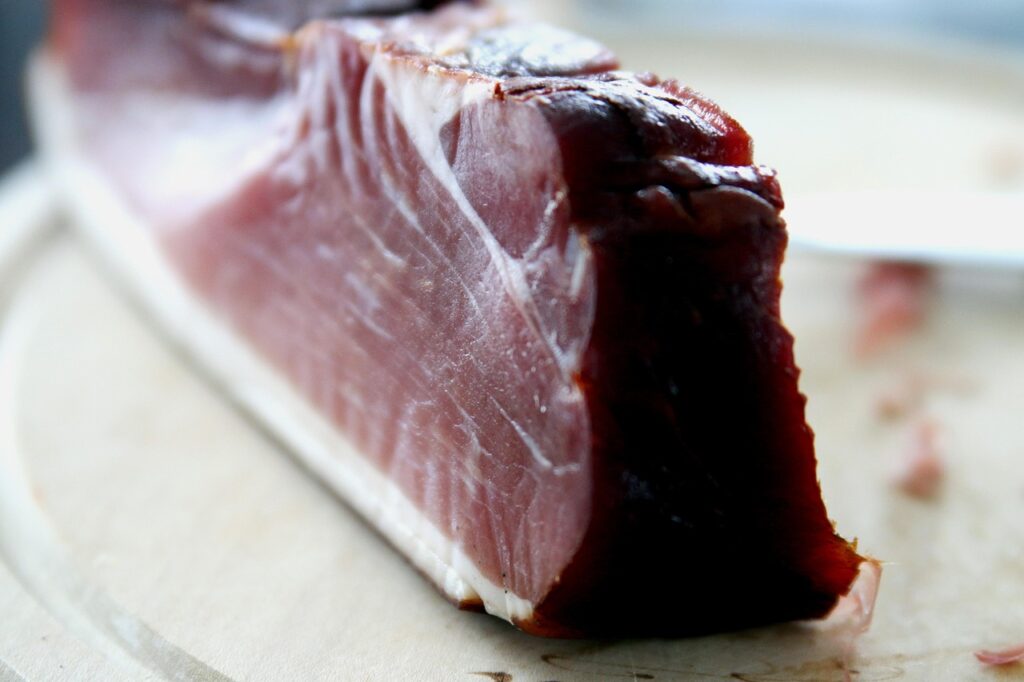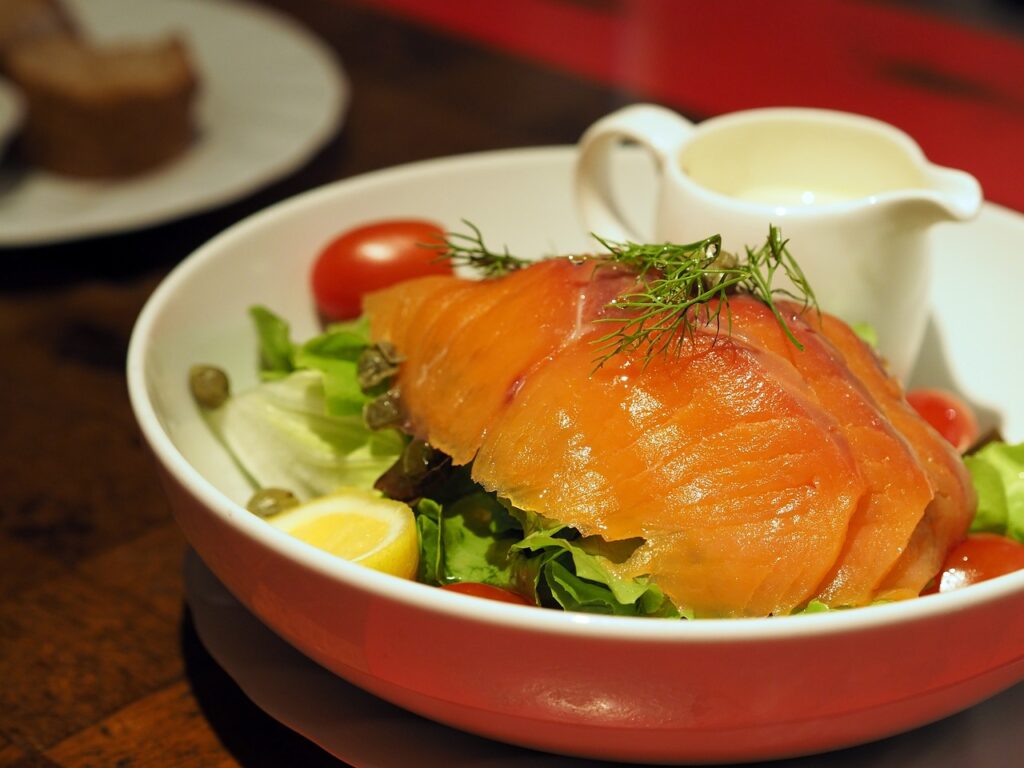You’ll learn how to smoke a brisket on a pellet grill or any grill, with clear steps to develop smoky bark, tender meat, and deep beefy flavor that make brisket a BBQ favorite. The article outlines what ingredients you need, exact cook times and temperatures, and precise smoking methods so you can follow the video’s recipe accurately.
You’ll also find practical tips on wood choices, rub variations, and visual cues and internal temperature targets for doneness, plus safe resting instructions. Serving suggestions and pairing ideas are included so you can plate the brisket confidently for your guests. Introduction
You’re about to take on one of BBQ’s most rewarding challenges: smoking a whole packer brisket. This low-and-slow staple delivers deep smoky flavor, tender meat, and a bark that’s worth the patience. Whether you’re using a pellet grill or a charcoal, gas, or offset setup, this guide walks you through choosing the right cut, prepping, seasoning, smoking, and finishing the brisket so you can serve reliably great results.
Choosing the Right Brisket
Select whole packer brisket (flat + point) size recommendation: 8 to 14 pounds for 2 to 8 people
Choose a whole packer brisket that includes both the flat and the point when you want the full range of flavors and textures. For a cook feeding 2 to 8 people, aim for an 8 to 14 pound packer; this gives you enough yield after trimming and shrink without an oversized cook that’s hard to manage. Smaller packers on the lower end are easier if you’re newer to brisket.
Look for good marbling and a consistent fat cap about 1/4 to 1/2 inch thick
When you inspect briskets, prioritize good internal marbling across the muscles — that intramuscular fat will render into flavor and juiciness during the long cook. Also look for a fairly even fat cap roughly 1/4 to 1/2 inch thick; that provides protection and moisture without creating excessive greasy pockets that need heavy trimming.
Understand grade options: USDA Choice or Prime preferred for best tenderness and flavor
USDA Choice or Prime graded briskets are preferred because they typically have better marbling and deliver superior tenderness and flavor after smoking. Choice is widely available and a great balance of value and quality; Prime is fatter and richer if you can find it and want a bit more decadence.
Consider prerigor vs previously frozen brisket and its impact on texture
If you have the choice, a brisket that has not been frozen (prerigor or fresh-chilled) can yield a slightly better texture and bark development. Previously frozen briskets will still smoke well but can sometimes have a different moisture profile or texture depending on how they were thawed and handled. Don’t worry too much if frozen is your only option—good trimming, seasoning, and low-and-slow technique will still produce excellent results.
Ingredients List
Beef brisket whole packer, 8 to 14 pounds (trimmed as needed)
Be sure to select an 8 to 14 pound whole packer brisket and trim as needed following the trimming guidance below.
Kosher salt, 1/3 cup for rub
Use kosher salt as listed: 1/3 cup for the basic rub base. This amount covers the surface of an 8–14 lb packer.
Coarse black pepper (freshly cracked), 1/3 cup for rub
Use 1/3 cup coarse black pepper (freshly cracked), a classic component of Texas-style brisket bark.
Paprika, 2 tablespoons for rub
Add 2 tablespoons paprika for color and mild sweetness in the all-purpose rub.
Garlic powder, 1 tablespoon for rub
Use 1 tablespoon garlic powder for savory depth.
Onion powder, 1 tablespoon for rub
Use 1 tablespoon onion powder to round out aromatics.
Brown sugar, 1 tablespoon for rub (optional for slight sweetness)
Include 1 tablespoon brown sugar if you want a touch of sweetness; it’s optional but balances flavors well.
Cayenne or chili powder, 1 teaspoon optional for heat
Add 1 teaspoon cayenne or chili powder if you want a small kick; optional.
Apple juice, 1 cup for spritz mixture
Prepare 1 cup apple juice to use in the spritz bottle for maintaining surface moisture during the smoke.
Apple cider vinegar, 2 tablespoons for spritz mixture
Combine 2 tablespoons apple cider vinegar with the apple juice to brighten flavors in the spritz.
Beef broth, 1 cup for injection or spritz alternative (optional)
Have 1 cup beef broth available if you prefer to inject for extra inside moisture or use as a spritz alternative; optional.
Worcestershire sauce, 2 tablespoons for injection (optional)
If you inject, mix 2 tablespoons Worcestershire into the beef broth as specified to add savory depth; optional.
Butcher paper or heavy-duty aluminum foil for wrapping
Have pink butcher paper or heavy-duty aluminum foil on hand for wrapping during the stall if you choose to wrap.
Wood pellets or wood chunks: post oak, hickory, or oak for classic brisket smoke
Select hardwood pellets or chunks such as post oak, hickory, or oak for classic brisket smoke. These woods give a balanced, traditional BBQ profile.

This image is property of i.ytimg.com.
Preparing the Brisket
Trim external fat to a uniform 1/4 to 1/2 inch fat cap and remove silver skin and hard fat pockets
Trim the fat cap to a uniform thickness of about 1/4 to 1/2 inch. Remove silver skin and any large, hard fat pockets that won’t render. A uniform cap promotes even cooking and helps render fat without leaving chewy or waxy areas.
Square the point and trim thin edges to prevent overcooking
Square the point so it lays flat and trim excessively thin edges that would dry out quickly. By evening up the meat profile you reduce the chance of thin parts overcooking while the thicker parts reach doneness.
Optional: separate point and flat if cooking to different doneness targets
If you prefer, you can separate the point from the flat to cook each to its ideal finish—some folks like the point to reach higher internal temperatures sooner for slicing into burnt ends, while the flat is sliced for leaner portions. This step is optional and depends on your goals.
Pat brisket dry with paper towels and keep refrigerated until seasoning time
Before seasoning, pat the brisket dry with paper towels to remove excess surface moisture—this helps the rub adhere and aids bark formation. Keep it refrigerated until you’re ready to apply the rub.
Rub and Seasoning Recipes
Basic Texas-style rub: kosher salt 1/3 cup and coarse black pepper 1/3 cup, mixed thoroughly
For a classic Texas-style approach, mix 1/3 cup kosher salt with 1/3 cup coarse black pepper and distribute evenly across the whole brisket. This minimal rub highlights beef flavor and produces a signature peppery bark.
All-purpose rub: kosher salt 1/3 cup, coarse black pepper 1/3 cup, paprika 2 tablespoons, garlic powder 1 tablespoon, onion powder 1 tablespoon, brown sugar 1 tablespoon, cayenne 1 teaspoon
If you want more complexity, combine 1/3 cup kosher salt, 1/3 cup coarse black pepper, 2 tablespoons paprika, 1 tablespoon garlic powder, 1 tablespoon onion powder, 1 tablespoon brown sugar, and 1 teaspoon cayenne. Mix thoroughly for an all-purpose rub that balances savory, sweet, and mild heat.
Apply rub evenly to all surfaces; use light pressure to adhere but avoid packing too thick
Apply your chosen rub evenly over all surfaces of the brisket. Use light pressure to help it adhere; don’t pack on an overly thick crust of rub—moderation ensures good bark and flavor distribution without overpowering the meat.
Allow seasoned brisket to rest uncovered in refrigerator 1 to 4 hours or up to overnight for dry brine effect
After seasoning, let the brisket rest uncovered in the refrigerator for 1 to 4 hours or up to overnight. This dry-brine period allows the salt to penetrate, seasons the interior, and helps dry the surface for improved bark during smoking.

This image is property of pixabay.com.
Injection and Marinade Options
Optional injection for added moisture: mix 1 cup beef broth with 2 tablespoons Worcestershire and inject evenly through the flat
If you want to add internal moisture and savory notes, mix 1 cup beef broth with 2 tablespoons Worcestershire sauce and inject it evenly into the flat. Inject in multiple spots and depths to distribute moisture, but avoid excessive injections that can disturb texture or bark formation.
Alternative spritz option for moisture: apple juice 1 cup with apple cider vinegar 2 tablespoons in a spray bottle
As an alternative to injecting, mix 1 cup apple juice with 2 tablespoons apple cider vinegar and place it in a spray bottle for periodic spritzing. This keeps the surface moist, helps smoke adhere, and adds a mild sweet-acid balance to the bark.
Timing: inject immediately after trimming or 1–2 hours before placing on the smoker
If you inject, do it immediately after trimming or up to 1–2 hours before placing the brisket on the smoker. This lets the injected liquid redistribute slightly. If you spritz, plan to use the spritz starting once the brisket is on the cooker and the bark begins forming.
Consider not over-injecting to preserve bark formation
Be mindful not to over-inject; too much internal liquid can interfere with bark development and may increase cook time. Aim for measured injections and rely primarily on long, slow smoke to render and retain moisture.
Pellet Grill Setup
Preheat pellet grill to 225°F (107°C) using quality hardwood pellets such as oak, hickory, or post oak
Preheat your pellet grill to 225°F (107°C) using quality hardwood pellets like oak, hickory, or post oak. Allow the pit to stabilize at temperature before placing the brisket on, as consistent heat is key to predictable cooking times.
Place brisket fat side up or down depending on pellet grill heat source; note pellet grills often provide even heat so fat side up is common
On a pellet grill that provides even top-to-bottom heat, place the brisket fat side up so the fat renders down into the meat. Some pellet grillers prefer fat side down if heat comes primarily from below; consider your grill’s heat profile and choose the orientation that protects the meat and promotes even cooking.
Use a reliable probe thermometer in the thickest part of the flat to monitor internal temperature
Insert a reliable leave-in probe thermometer into the thickest part of the flat portion before you put the brisket on. Continuous temperature monitoring is essential for catching plateaus and knowing when to wrap or finish.
Maintain pellet hopper filled and monitor pellet feed; avoid excessive opening of the lid
Keep the pellet hopper adequately filled and monitor the pellet feed to sustain steady smoke and temperature. Avoid frequent or prolonged opening of the lid, as that causes temperature swings and lengthens cooking time.

This image is property of pixabay.com.
Setting Up Any Grill (Charcoal, Gas, or Offset)
Create a two-zone fire for indirect cooking: coals or heat on one side, brisket on the other
For charcoal, gas, or offset setups, build a two-zone fire with coals or burners concentrated on one side and the brisket positioned on the cool side for indirect cooking. This keeps the brisket from direct flame while letting smoke and heat circulate gently.
Stabilize temperature at 225°F (107°C) to 250°F (121°C); use a water pan for humidity in the cooking chamber
Stabilize your grill’s cooking temperature between 225°F (107°C) and 250°F (121°C). Place a water pan in the cooking chamber to add humidity, moderate temperature swings, and help maintain a moist environment for the brisket during the lengthy smoke.
Add wood chunks or chips for smoke: soak chips 30 minutes if using chips and add periodically
Add hardwood chunks or soaked wood chips to your fire for smoke. If you use chips, soak them for about 30 minutes before adding to slow their burn rate. Add wood periodically to maintain a gentle, steady smoke rather than heavy, acrid output.
Position brisket so it receives indirect heat, fat cap orientation toward the heat source for barrier protection
Position the brisket so it’s out of direct heat and receives indirect heat and smoke. When using charcoal or offset setups, orient the fat cap toward the heat source to act as a protective barrier; for pellet grills with even heat, fat-up is commonly used.
Smoking Process and Timeline
Initial smoking at 225°F (107°C) until internal temperature reaches 150°F to 160°F, typically 3 to 5 hours depending on brisket size
Start the brisket at 225°F (107°C) and smoke until the internal temperature reaches 150°F to 160°F. For an 8–14 lb packer this typically takes about 3 to 5 hours, though times vary with brisket size, ambient conditions, and grill performance.
Spritz or mop every 45 to 60 minutes with apple juice mixture to maintain surface moisture and help smoke adhesion
Begin spritzing or mopping the brisket with the apple juice/apple cider vinegar mixture every 45 to 60 minutes once the surface starts to dry. This keeps the exterior tacky so smoke sticks and helps achieve a glossy, flavorful bark. Don’t overdo it—light, infrequent spritzes are best.
Expect total cook time approximately 1 to 1.25 hours per pound at 225°F as a guideline, but rely on internal temperature and feel
Use a guideline of roughly 1 to 1.25 hours per pound at 225°F for planning, but don’t treat it as a strict rule. Brisket is highly dependent on internal temperature and feel; cook times will vary, so monitor internal temp and probe tenderness rather than the clock alone.
Wrap brisket in pink butcher paper or foil when internal temperature plateaus around 160°F to 170°F to push through the stall (optional)
When the internal temperature stalls around 160°F to 170°F, consider wrapping in pink butcher paper (for better bark preservation) or heavy-duty foil (for faster moisture retention) to push through the stall. Wrapping is optional; leaving unwrapped yields a firmer bark but may prolong cooking.

This image is property of pixabay.com.
Monitoring Temperature and Doneness
Target internal tenderness range: 195°F to 205°F; many pitmasters aim for 203°F as a sweet spot
Aim for internal tenderness in the 195°F to 205°F range, with many experienced pitmasters targeting about 203°F as a sweet spot where connective tissue has melted and the meat is succulently tender.
Use a leave-in probe thermometer to monitor internal temperature continuously
Use a reliable leave-in probe thermometer so you can continuously monitor internal temperature without repeatedly opening the grill. Continuous monitoring helps you time the wrap, the finish, and the rest precisely.
Check for ‘probe tender’ doneness: probe should slide in with little resistance, similar to soft butter; if it sticks, continue cooking
Doneness is ultimately about tenderness, not just temperature. Check for “probe tender” doneness by inserting a probe into the thickest part of the flat; it should slide in with little resistance, feeling like soft butter. If it still feels firm or sticky, continue cooking and recheck periodically.
Differentiate between temperature-only doneness and tenderness-based doneness; prioritize tenderness for brisket
Understand that temperature and tenderness don’t always match up moment-to-moment. A brisket may reach 203°F yet still need more time to become probe-tender. Prioritize tenderness—if the probe feels right, you’re done, even if the thermometer reads slightly below or above your target.
Conclusion
Summary of key targets: brisket size choice, rub recipe, smoker temp 225°F, wrap at 160°F–170°F, finish at 195°F–205°F and rest 1–2 hours
In summary: choose an 8–14 lb whole packer for 2–8 people, trim to a 1/4–1/2 inch fat cap, and use either a simple salt-and-pepper rub (1/3 cup kosher salt + 1/3 cup coarse black pepper) or the all-purpose blend listed. Smoke at about 225°F (107°C), consider wrapping at the stall around 160°F–170°F, and finish when probe-tender in the 195°F–205°F range. Rest the brisket for 1–2 hours wrapped to redistribute juices.
Encouragement to rely on tenderness and probe feel over strict time estimates for best results
Remember to rely on tenderness and probe feel rather than rigid cook times. Brisket is a living cook influenced by meat variation and the day’s conditions—using feel and temp together gives the most consistent, delicious results.
Final serving reminder: slice against the grain, serve with complementary sides and sauces, and enjoy the reward of low-and-slow BBQ
When serving, slice brisket against the grain for the most tender bites; separate point and flat slices if you left them whole. Offer complementary sides like coleslaw, potato salad, pickles, and fresh bread, and provide sauce on the side so guests can choose. Enjoy the fruits of your patient low-and-slow work.
Suggested next steps: experiment with woods and rubs, document cook times and probe temps for consistent repeatable results
As next steps, experiment with different woods (post oak, hickory, oak) and small rub tweaks to find your signature profile. Document cook times, probe temps, wrapping decisions, and ambient conditions each time—this log will help you repeat and refine excellent brisket cooks.
